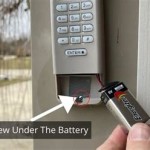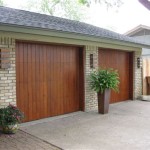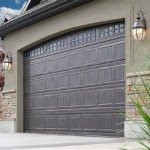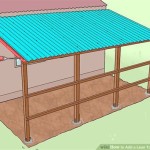Tips for Garage Door Repair in Surprise, Arizona
Garage doors, while seemingly simple in their operation, are complex mechanical systems. They consist of numerous interconnected parts working in unison to provide reliable access to a garage. When a garage door malfunctions, whether partially or completely, it can disrupt daily routines, compromise security, and even pose safety hazards. In Surprise, Arizona, where extreme temperatures can exacerbate wear and tear, understanding basic garage door repair tips is crucial for homeowners.
Addressing garage door issues promptly is essential to prevent further damage and potentially costly repairs. While some minor issues can be resolved with basic troubleshooting and DIY techniques, more complex problems necessitate the expertise of a qualified garage door technician. This article provides a comprehensive overview of essential tips for garage door repair in Surprise, Arizona, focusing on preventative maintenance, safety precautions, and common troubleshooting steps.
Regular Inspection and Preventative Maintenance
The cornerstone of effective garage door repair is proactive maintenance. Regular inspection and preventative measures can identify potential problems early, preventing them from escalating into major repairs. A routine maintenance schedule should be established, ideally performed at least twice a year – once in the spring and once in the fall – to account for seasonal changes and increased usage during specific times of the year.
Visual inspection is the first step in preventative maintenance. Homeowners should carefully examine all components of the garage door system, including the springs, cables, rollers, tracks, and hinges. Look for signs of wear and tear, such as rust, fraying, cracking, or bending. Pay close attention to the springs, as these are under immense tension and can be dangerous if damaged. Any signs of damage should be addressed immediately.
Lubrication is another crucial aspect of preventative maintenance. Moving parts should be lubricated regularly to ensure smooth operation and reduce friction. Use a silicone-based lubricant specifically designed for garage doors on the rollers, hinges, tracks, and springs. Avoid using oil-based lubricants, as these can attract dirt and debris, potentially causing further problems. It's critical to lubricate all moving parts to reduce strain on the opener mechanism and allow for seamless operation.
Tightening loose hardware is also essential. Over time, the vibrations caused by the garage door's operation can loosen nuts, bolts, and screws. Periodically check all hardware and tighten any loose connections. This will help prevent parts from becoming dislodged and causing further damage. Additionally, ensure the track is properly aligned and free from obstructions. Debris such as leaves, dirt, and small objects can accumulate in the tracks, hindering the door's movement. Clean the tracks regularly to maintain smooth operation.
Testing the garage door's balance is another vital aspect of maintenance. To test the balance, disconnect the garage door opener by pulling the emergency release cord. Manually lift the door halfway up. If the door stays in place, it is properly balanced. If it drifts up or down, the springs may need adjustment or replacement. Spring adjustment is a task best left to professionals due to the high tension involved.
Prioritizing Safety During Garage Door Repair
Safety should always be the top priority when performing any type of garage door repair. Garage doors are heavy and operate under significant tension, making them potentially dangerous if handled improperly. Always disconnect the garage door opener from the power source before beginning any repair work. This will prevent accidental activation of the opener and reduce the risk of injury. Disconnecting the opener is a necessary and crucial step to ensure safety.
Never attempt to repair or replace garage door springs unless you have the necessary training and experience. Garage door springs are under extreme tension and can cause serious injury or even death if mishandled. If you suspect that your garage door springs are damaged or need replacement, contact a qualified garage door technician immediately. The potential consequences of improper spring handling are severe; therefore, professional assistance is essential.
When working on the garage door, wear appropriate safety gear, including safety glasses and gloves. This will help protect your eyes and hands from potential injuries. Eye protection is particularly important when working with tools or cleaning dusty components. Gloves provide a better grip and offer protection from sharp edges or splinters.
Be aware of your surroundings and ensure that the work area is clear of obstacles. Keep children and pets away from the garage door while you are working on it. This will prevent accidental injuries and ensure that you can focus on the task at hand. A clear workspace also helps to prevent tripping hazards and allows for unobstructed movement around the garage door system.
If you are using any tools, make sure they are in good working condition and that you know how to use them properly. Using the wrong tools or using tools incorrectly can lead to injuries or damage to the garage door. Always refer to the manufacturer's instructions for the proper use of each tool. If you are unsure of how to use a particular tool, seek guidance from a qualified professional.
Troubleshooting Common Garage Door Problems
Many garage door problems can be resolved with basic troubleshooting. Understanding common issues and their potential solutions can save time and money. One common problem is a garage door that won't open or close. First, check the power supply to the garage door opener. Ensure that the opener is plugged in and that the circuit breaker has not tripped. If the power supply is working, check the safety sensors.
Garage door safety sensors are located near the bottom of the door tracks and are designed to prevent the door from closing if an obstruction is detected. Make sure the sensors are properly aligned and that there are no obstructions blocking the beam. Sometimes, something as simple as debris, such as dust or leaves, can obstruct the sensor beam, causing the door to malfunction. Clean the sensors thoroughly with a soft cloth. If the sensors are misaligned, gently adjust them until the indicator lights on both sensors are illuminated steadily.
If the garage door opens but doesn't close, the problem could be with the limit switches. Limit switches are located on the garage door opener and control the distance the door travels. If the limit switches are not properly adjusted, the door may not close completely. Consult the garage door opener's manual for instructions on adjusting the limit switches. This adjustment might involve turning screws or repositioning levers on the opener unit. Ensure that adjustments are made in small increments to avoid overcorrection.
A noisy garage door can be another common problem. Noise can be caused by several factors, including worn rollers, dry hinges, or a loose chain or belt. Lubricate all moving parts of the garage door system to reduce friction and noise. If the rollers are worn, replace them with new ones. Ensure the replacement rollers are the correct size and type for your garage door. Examine the chain or belt of the garage door opener. If it is loose, tighten it according to the manufacturer's instructions. A properly tensioned chain or belt will contribute to quieter and more efficient operation.
If the garage door operates unevenly or gets stuck, the problem could be with the tracks. Inspect the tracks for dents, bends, or obstructions. Remove any debris from the tracks and straighten any bent sections. If the tracks are severely damaged, they may need to be replaced. Ensure the tracks are securely mounted to the garage walls. Loose or damaged mounting brackets can cause the tracks to shift, leading to uneven door operation.
Finally, a garage door that reverses unexpectedly while closing may indicate a problem with the force setting on the garage door opener. The force setting determines the amount of force the opener applies to close the door. If the force setting is too high, the door may reverse unexpectedly. Consult the garage door opener's manual for instructions on adjusting the force setting. Reduce the force setting gradually until the door closes smoothly without reversing. Repeat the safety sensor test after adjusting the force setting to ensure proper functionality.
In Surprise, Arizona, the desert climate can accelerate the wear and tear on garage door components. Regular maintenance, prompt attention to issues, and a commitment to safety are paramount. By following these tips, homeowners can ensure their garage doors operate smoothly and safely for years to come. When in doubt, consulting a qualified garage door repair technician is always the best course of action to ensure a proper and safe repair.

Best Garage Door Repair Near You In Surprise Installation Get 400 Off New Doors A1 Service

Garage Door Parts Surprise Az

Surprise Az Garage Door Services Jctz Doors

Trusted Garage Door Service Repair In Surprise Az

Best Garage Door Repair Near You In Surprise Installation Get 400 Off New Doors A1 Service
Garage Door Repair Surprise Az Iconic Company Phoenix

Surprise Garage Door Repair Az

New Garage Door Installation Surprise Az The Guys

Surprise Super Garage Door Replacement

Garage Doors Door Repair Phoenix Arizona Area By Pros
Related Posts








